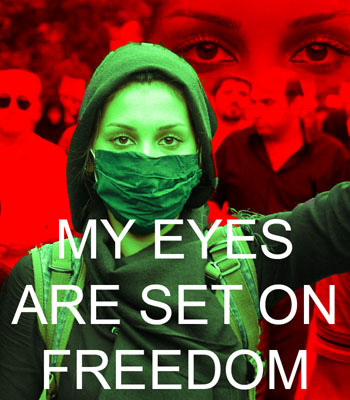Palmyra: ISIS-wanton destruction
on: October 05, 2015In: ASIA, MIDDLE EAST, OPINION, POLITICSNo Comments
By Rene Wadlow
On 4 October, 2015 Maamun Abdulkarim, the Syrian Director General of Antiquities and Museums, confirmed that the 2000 year old Arch of Triumph in the ancient city of Palmyra had been blown up by ISIS forces which control the city and the surrounding area. He said “ It is now wanton destruction; their acts of vengeance are no longer ideologically driven because they are now blowing up buildings with no religious meaning.”
On 23 August, the temples of Baalshamien − Lord of the Heavens − and Bel, a goddess often associated with the moon, had been largely destroyed by ISIS (Daesh in Arabic). This iconoclastic approach to pre-Islamic faith and their material culture is the same as had led to the destruction of the large Buddha statues in Afghanistan – monuments that attested to the rich culture along the Silk Road.
Masmun Abdulkarim called upon the international community to find a way to save Palmyra. His cry comes from the heart as he is the nephew of the long-serving director of the archaeological sites of Palmyra, Dr Khaled al-Assad. On 18 August, Dr al-Assad had his neck cut and his body hung from a traffic light pole. The 83 year-old archaeologist had been held in seclusion (and probably tortured) for three weeks. In the public square of Palmyra an accusation was read out that he was the “director of pagan idols.”
From a distance, it is hard to know what elements within ISIS are responsible for these destructions and what are the motivations. ISIS has attracted fighters from a good number of countries, and it is impossible to know the nationalities within the chains of command. Many Syrians are proud of the vestiges of pre-Islamic civilizations, proof that the area was an important actor and in some ways a rival of Rome. Thus, it is not clear who wants to destroy works of art and cultural heritage. It is impossible to know at this stage if there are possibilities of rational discussion and good-faith negotiations with ISIS authorities to preserve cultural sites in Syria and Iraq.
Syria and Iraq are home to some of the world’s first cities, a complex and unique meeting of states, empires, and faiths. The protection of works of art and cultural heritage is an aspect of world law in which UNESCO is playing a leading role. There is also a need to build an awareness and then action on the part of non-governmental organizations, especially those in consultative status with the United Nations as well a cultural institutions. One of the difficulties with appeals to the “international community” is that the international community has no street address, and so appeals are rarely delivered. Too often, governments and people react after events rather than affirming a position from a deeper level of awareness and a legal basis in world law.
The protection of cultural heritage owes much to the vision and energy of the Russian artist Nicholas Roerich (1874-1947). Roerich’s desire to make known the artistic achievements of the past through archaeology, coupled with the need to preserve the landmarks of the past from destruction, led to his work for the Banner of Peace to preserve art and architecture in time of war. Roerich had seen the destruction brought by the First World War and the civil war which followed the 1917 Russian Revolution. He worked with French international lawyers to draft a treaty by which museums, churches and buildings of value would be preserved in time of war through the use of a symbol − three red circles representing past, present and future – a practice inspired by the red cross to protect medical personnel in times of conflict.
Roerich mobilized artists and intellectuals in the 1920s for the establishment of this Banner of Peace. Henry A. Wallace, the US secretary of Agriculture and later Vice-President of the United States, was an admirer of Roerich and helped to have an official treaty introducing the Banner of Peace − the Roerich Peace Pact − signed at the White House on 15 April 1935 by 21 States in a Pan-American Union ceremony. At the signing, Henry Wallace on behalf of the USA said “at no time has such an ideal been more needed. It is high time for the idealists who make the reality of tomorrow, to rally around such a symbol of international cultural unity. It is time that we appeal to that appreciation of beauty, science, education which runs across all national boundaries to strengthen all that we hold dear in our particular governments and customs. Its acceptance signifies the approach of a time when those who truly love their own nation will appreciate in addition the unique contribution of other nations and also do reverence to that common spiritual enterprise which draws together in one fellowship all artists, scientists, educators and the truly religious of whatever faith.”
As Nicholas Roerich said in a presentation of his Pact “The world is striving toward peace in many ways and everyone realizes in his heart that this constructive work is a true prophesy of the New Era. We deplore the loss of the libraries of Louvain and Oviedo and the irreplaceable beauty of the Cathedral of Rheims. We remember the beautiful treasures of private collections which were lost during world calamities. But we do not want to inscribe on these deeds any words of hatred. Let us simply say: Destroyed by human ignorance – re built by human hope.”
The Roerich Peace Pact is the world-law basis for an expression of concern from the governments of what was the Pan-American Union (In 1948 it was reestablished as the Organization of American States). There is also the Hague Convention of May 1954 which was signed by a wider geographic range of States. The Roerich Peace Pact and the Hague Convention are rarely cited by governments. Therefore, leadership must come from non-governmental organizations and the cultural sector to work unitedly and creatively to prevent the wanton destruction of humanity’s cultural heritage.
Rene Wadlow
Rene Wadlow is the President of the Association of World Citizens, an international peace organization with consultative status with ECOSOC, the United Nations organ facilitating international cooperation on and problem-solving in economic and social issues.
Copyright mediaforfreedom.com


